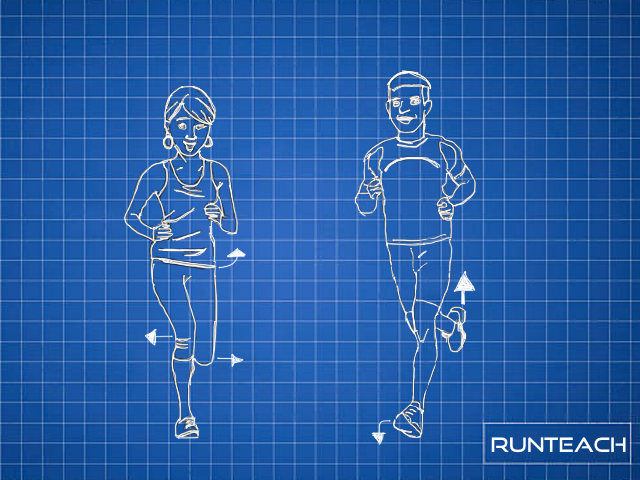Midsection Part 1
This post relates to my Blueprint for running, which is free to download here – from my other site, The Confident Runner.
OK, so we’ve covered a lot so far in the self-assessment from the Blueprint. By now you will be getting a good idea of how you are running, and becoming aware of your arms, the sound you make, and you’ve probably started to notice some stuff about your posture.
And this brings us nicely to the self-assessment of your midsection.
How your torso moves tells a story about how well prepared you are to run. Let’s have a look…
Imagine you are on a run, running behind someone. You look at their shoulders and notice there is a large swing from side to side. With every stride their shoulder blades have turned further than 45 degrees, and while you might not care about angles, you can see there is a lot more rotation than you think there should be.
You glance at their hips and there is a lot of movement. Their hips are bobbing up and down and side to side.
You decide to overtake, and as you pass you glance across to them and notice that they are bending forward from the waist. It’s not much of a bend, but this is just the first mile. By the end, as they get more tired, is that forward bend going to be even worse?
As you pace a way from them, you think to yourself: “is that how I look?”.
The first box on the Mid Section part of the self-assessment form, Rotation, is referring to that shoulder rotation. Ideally, you want the rotation to be controlled and minimal. To understand why, let’s have quick look. Your back is primarily in three sections:
-
Cervical spine at the very top, and includes your neck
-
Thoracic spine, from shoulders to about two thirds down
-
Lumbar spine, what we usually refer to as your lower back
As you walk and run, your hips rotate as one leg reaches out in front and the other goes behind. This is normal and is what we want. We also know that on the next step you will be rotated to the other side.
It is this continuous rotation of your pelvis activating the muscles and connective tissue that drives you forward. The key is to harness the rotation and make the natural elasticity of the various tissues work for you and not against you. Think of your midsection as a huge rubber band that gets tensioned with each rotation.
You don’t have much rotation ability at your lumbar spine, so it moves up to your thoracic spine to do most of that harnessing. If your shoulders are rotating a lot, then you are not harnessing the rotation as well as you could. Actually, you are spilling a lot of energy.
Not only that, but if your shoulders are over-rotating, the chances are that you are causing yourself to be off-balance with every step. That has a lot of safety implications in itself, but it is also a huge draw on your energy from a neurological perspective.
As you’ll know by now, your brain’s first job is to keep you safe. It is scanning and assessing every single message that comes into it – millions of messages per second. This is why your brain, even when you are at rest, consumes 25% of your daily calories.
Give it a bigger challenge such as some serious brain work, and that energy usage increases massively. This is why things like Zoom calls can be so tiring. Your brain is having to process much more immediate information than it’s used to, and some of that information is mismatched due to poor Internet connections, light conditions etc.
Over-rotation when running is the same. If you are off-balance, your brain constantly has to recalculate the position your limbs need to be in to stop you falling over. This uses a huge amount of energy and makes for an inefficient and often heavy feeling run. So if you are often ploddy and feel a bit stuck, make sure you are doing the self-assessment to see what could be causing your brain to be doing too much corrective work.
That’s a lot for one email so we’ll leave it there until next time. Until then, start to notice how much rotation you have at your shoulders. Do you get achy shoulders after a certain distance or time running? Does your lower back start to hurt? Do you get a stiff neck?
All these things are part of your midsection technique story, and all are important clues as to how you can improve.
Unleash your hips is my online course designed to help you get those flying feet through better hip and pelvis mobility and improved running technique. Click Here to find out more.


